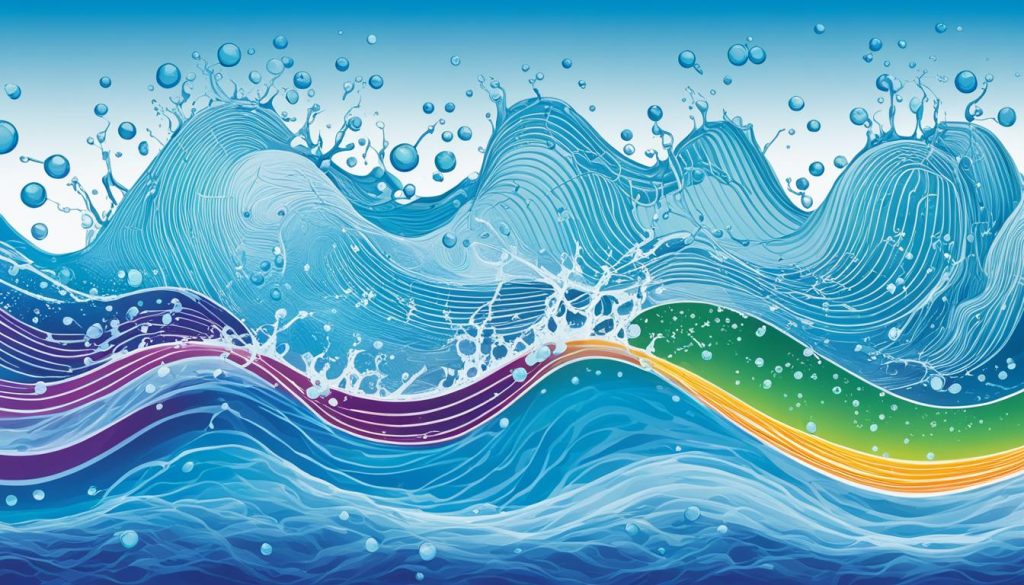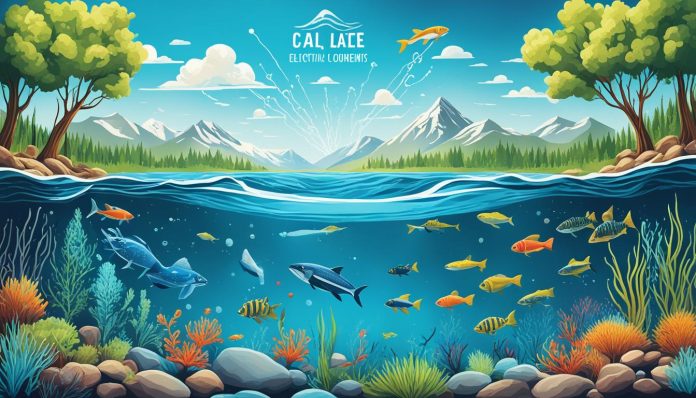The distance electricity can go in water depends on its conductivity. This is affected a lot by saltiness and how warm or cold it is. These facts help us make safer and more energy-friendly plans for water projects around the world.
Knowing about how electricity moves in water helps us improve energy use smartly. Tips about saltiness and temperature’s effects on water’s ability to carry electricity are key. They lead to both safer work and cool new uses of this info in making water projects better.
In today’s world, everyone wants energy solutions that are good for the planet. So, figuring out how electricity works in water has become very important. This knowledge makes a big difference in making tech work and keeping everyone safe in projects around water.
This info helps from planning to doing the work. It’s all about how things like saltiness and temperature change how electricity moves in water. This knowledge keeps us safe and helps us make new energy ways that are good for the earth.
Key Takeaways
- Distance of electricity travel in water hinges on variables such as salinity and temperature.
- Advancements in hydro-environment engineering significantly improve electrical transmission efficiency.
- Understanding electrical conductivity in aquatic settings is essential for safety and innovation.
- Expert insights play a pivotal role in developing effective and sustainable hydro-electric systems.
- Real-world applications of these insights enhance both energy efficiency and safety protocols in hydro projects.
The Fundamentals of Electrical Conductivity in Water
Looking at electrical conductivity in aquatic environments helps us understand electrical transmission. This is key for safety and making sure electrical flow is right in the real world.
Understanding Electrical Transmission in Aquatic Environments
Electricity moves through water because it can carry electricity. Its ability to do this is called electrical conductivity. Things like salinity and temperature can change how well water conducts electricity. This affects how far and well electricity can move through it.
Impact of Salinity and Temperature on Conductivity
Salinity makes water more conductive by adding ions. So, water with more salt can move electricity better. On the other hand, temperature is important, too; warmer water conducts more because ions move quicker in it.
Safety Precautions and Real-World Applications
Controlling electrical conductivity in water is vital for safe work underwater. It helps protect people and equipment from the dangers of electricity in water. This is important for many fields, including marine biology, making electricity from water, and keeping underwater systems working right.
How Far Can Electricity Travel in Water
When we look at how electricity moves in water, certain things matter a lot. These include how well water conducts electricity, how salty it is, and its temperature. In the world of water, these things work together to affect how far electricity can go. It’s important to understand each part for anyone working with water and electricity.
Electrical conductivity comes first. It lets electricity flow through water. Saltwater is better for this than freshwater is. That’s because saltwater has more ions thanks to the salt in it. Because of this, electricity can move over longer distances in saltwater.
The next big thing is temperature. Warmer water lets ions move around more. This means electricity can travel further in warm water. On the other hand, cold water slows down those ions. So, electricity does not move as well in cooler water.

| Factor | Impact on Electrical Conductivity |
|---|---|
| Salinity | Higher salinity increases conductivity, allowing electricity to travel further. |
| Temperature | Warmer temperatures enhance ionic mobility, thus increasing conductivity. |
- Salinity: Water’s conductivity depends a lot on salt. More salt means electricity moves better.
- Temperature: It’s key too. The temperature decides how fast ions can move, changing how electricity flows in water.
Knowing all this helps show how complex electricity in water really is. It gives important clues for technology and safety uses.
Advancements in Hydro-Environmental Engineering for Energy Efficiency
In sustainable development, hydro-environment engineering is key. It leads in boosting electrical transmission systems’ efficiency. Hydroelectric power plants use waterfalls and river currents to make power. This makes it both environmentally friendly and a top source of renewable energy.
These structures help meet our energy needs without harming the planet. They use water’s movement to create power, avoiding greenhouse gas emissions. They are crucial for keeping our environment safe in the energy field. Adding new technologies in hydro-environment engineering also makes these plants work better and more reliably.
The field keeps getting better at helping electrical transmission work well. It makes our energy systems tough and able to change with the environment. As we keep progressing, these steps in hydro-environment engineering are vital for a cleaner, more efficient energy future. This shows why continuous innovation in engineering is so important.












































